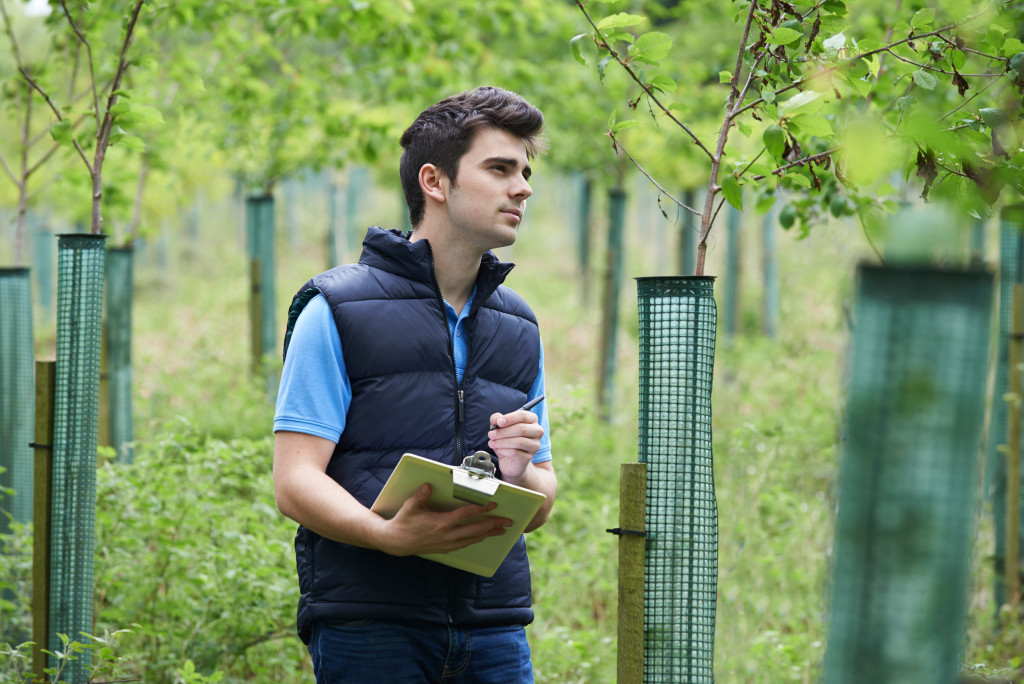- Urban forestry offers numerous roles in managing trees and greenery in cities, enhancing urban life quality.
- The responsibilities in urban forestry encompass tree maintenance, pruning, trimming, and tree removal when necessary.
- Various courses are available for aspiring urban foresters, including tree surgery, urban planning, and community outreach.
- Many rewarding career opportunities exist within urban forestry, providing meaningful, engaging work that serves the community.
When you think of forests, you often imagine vast expanses of greenery, towering trees, and a range of wildlife. However, what if there’s a whole other forest that most people repeatedly overlook, those that people see every day but hardly recognize?
Urban forestry is the practice of managing trees and greenery in urban settings. An urban forester works to ensure that tree planting is done correctly and maintained in a way that represents the good of the community. This article will explore the hidden world above and discover the career opportunities in urban forestry.
Sustainable Management
Trees play an essential role in the environment, and urban forestry strives to maintain a sustainable ecosystem by planting and maintaining trees and green spaces. An enormous benefit to working in urban forestry is that you get to work on improving the quality of life of individuals living in urban areas. In urban forestry, you’ll get to participate in the following:
Maintaining a Tree
Maintaining a tree involves numerous tasks that contribute to the overall health and longevity of the tree. An urban forester is responsible for regular pruning to maintain the structural integrity of the tree, pest control measures to protect the tree from diseases and insects, and watering during dry periods to ensure the tree’s vitality. Moreover, they also ensure the safety of the urban populace by removing dead or hazardous branches and monitoring trees for signs of disease or decay.
Pruning and Trimming
A significant part of urban forestry involves the pruning and trimming of trees. This is not just about aesthetics; it’s about promoting the tree’s health, ensuring public safety, and maintaining proper tree structure . Pruning involves removing dead, weak, or diseased branches, whilst trimming is often focused on maintaining a tree’s shape and appearance. Urban foresters are skilled arborists who understand the science behind these practices, making sure the trees grow tall, sturdy, and healthy, enhancing the beauty of urban landscapes.
Tree Removal When Necessary
Tree removal is a crucial aspect of urban forestry, which, while it might seem counterintuitive, is sometimes the best course of action for the betterment of the urban environment. This usually occurs when trees pose a risk due to disease, decay, or potential for damage to nearby structures. Urban foresters must accurately assess these risks, and if a tree needs to be removed, they ensure it is done safely and effectively.

Relevant Courses
To become an urban forester, it is essential to have a solid understanding of botany, ecology, horticulture, and urban planning. Numerous educational institutions offer courses in these fields, with some even providing specialized programs focused on urban forestry. These courses equip students with the knowledge and skills necessary to manage and preserve urban green spaces effectively. Here are some examples:
Tree Surgery
Tree surgery is an essential part of urban forestry, requiring specialized knowledge and techniques. In-depth tree surgeon courses offer comprehensive knowledge about the biology of trees, diagnosis of tree diseases, tree climbing, and aerial rescue, and the safe use and handling of powered tools and equipment. These courses provide you with the hands-on experience necessary to safely and effectively manage the health of urban trees, making cities greener and safer places to live.
Urban Planning and Design
Urban planning and design courses focus on understanding the relationship between cities, inhabitants, and nature. These courses provide students with a deep understanding of urban form, natural systems, and sustainable land use strategies. This knowledge is crucial for urban forestry as it allows foresters to integrate greenery into city landscapes effectively.
Community Outreach
The success of any urban forestry initiative depends on the support and involvement of the local community. Therefore, courses in community outreach teach students how to effectively engage with residents, educate them about the importance of trees, and encourage their participation in tree planting and maintenance initiatives. These skills are vital for urban foresters as they work towards creating a more sustainable and greener environment.

Career Opportunities
Working within urban forestry provides a wealth of career opportunities that all play a part in enhancing urban environments. These professions aren’t just limited to the role of an urban forester.
They also include positions such as urban planners , landscape architects, community outreach specialists, and tree surgeons, among others. Each role contributes to the broader goal of building, maintaining, and preserving green spaces within cities.
Together, these careers make urban forestry a diverse and dynamic field, offering opportunities for individuals with a variety of interests and expertise.
Several career opportunities within urban forestry offer meaningful, challenging, and rewarding work that serves the community. An urban forester can specialize in any number of areas, such as tree climbing, research, maintenance, or urban development, and work for public or private entities. As a society, people must continue to give attention to urban space, and those individuals capable of standing out will find fulfillment in communicating with local communities and playing a crucial role in enhancing green spaces, providing an eco-friendly environment, and a healthier planet for all.
